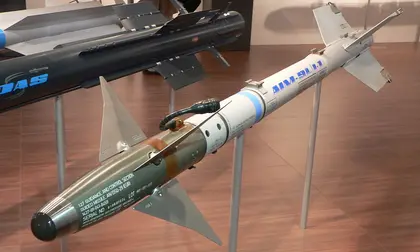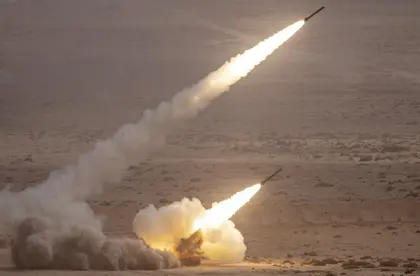On a recent visit to the US Ukrainian Prime Minister, Denys Shmyhal, met with U.S. Defense Secretary Lloyd Austin and repeated Ukraine’s request for F-16 fighter jets and the accompanying weapons. US engineers and technicians have already been working to allow some air-to-ground weapons to be fitted to Ukraine’s MiG-29s, albeit with some limitations.
The German-owned, US-based journal, Politico, reports that the US military is already working to integrate advanced Western air-to-air weapons onto Ukrainian fighters – including the AIM-120 AMRAAM. This would significantly increase Ukraine’s air defense capability but there is a major issue in making the interface between some weapons and the aircraft – it’s like they speak two different languages because, in reality, they do. But the Pentagon hopes they will be able to solve the issues and successfully give Ukraine increased firepower in the skies.
JOIN US ON TELEGRAM
Follow our coverage of the war on the @Kyivpost_official.
NATO counties, such as the UK, have already promised to train Ukrainian fighter pilots. Now with the probability of getting Western air-to-air missiles in the near future and also the possibility of getting Western jets at some point, Kyiv Post looks at the enhancement this would make to Ukraine’s air superiority.
As a case study, here’s what a typical US fighter aircraft employ against enemy aircraft.
US Air-to-Air Weapons Systems

Musk Defends Paid Blue Badge Plans for Twitter
The United States Air Force, Navy, and Marine Corps have three tiers of weapons with which to shoot down opponents in the sky. These have ranges which stretch from a few meters to over 150 kilometers. They include radar-guided missiles, heat-seeking missiles and guns - yes, guns are still a good thing if you get into a dogfight.
Some long-range weapons are employed against multiple targets simultaneously using radar and data links. Another option is to use a helmet-mounted system to send a missile on its way to a target, just by looking at it. And the final option is to use Red Baron-style basic fighter maneuvers like in World War I in a classic duel.
Let’s look at the weapons in a bit more detail.
The AIM-120 Advanced Medium-Range Air-to-Air Missile (AMRAAM)
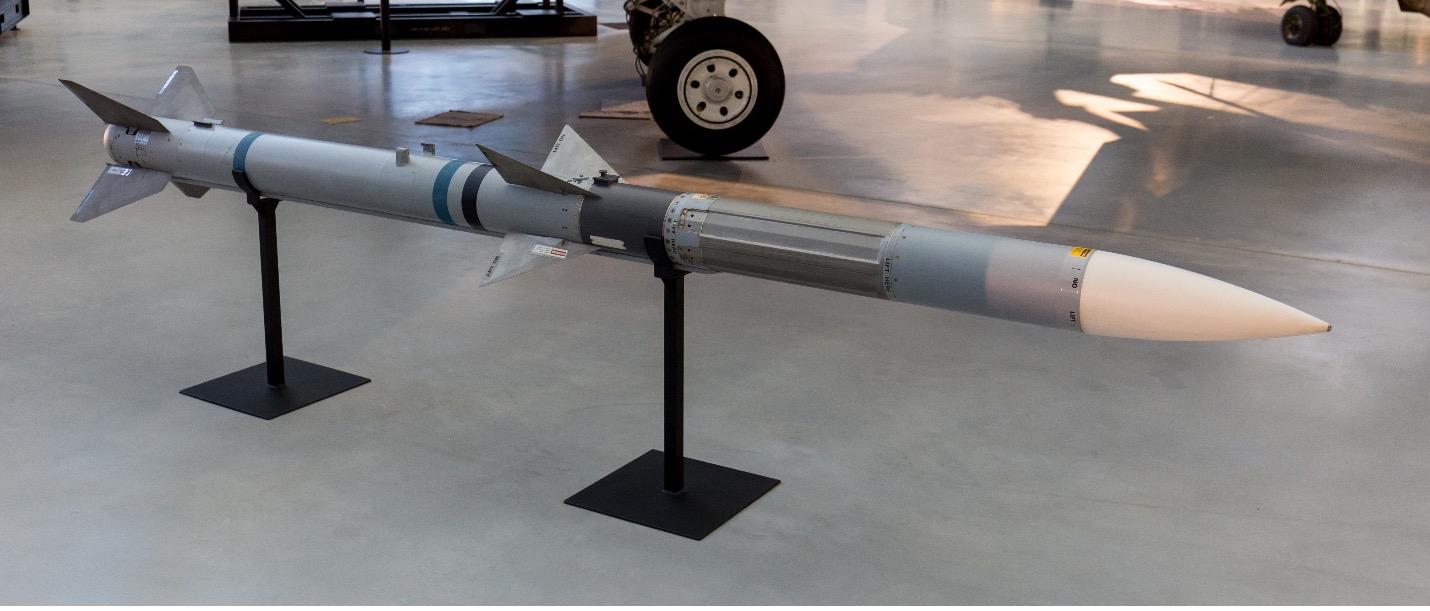
AIM-120 AMRAAM
Photo: Balon Greyjoy - Own work, CC0, .wikimedia.org
The AMRAAM - designed for both beyond visual range (BVR) and within visual range (WVR) employment - is probably the premier air-to-air missile available in current world inventories.
It employs its own active radar – thus not requiring illumination by a fighter aircraft’s radar as in previous generations – giving it a potential fire-and-forget capability.
For optimal employment at longer ranges, the firing aircraft detects the target with its radar and sends an updated location of the target using optional mid-course data-link guidance until the missile’s own smaller radar can see the target. When the AMRAAM internal systems detects that its own information is better than the pilot’s, the missile stops listening to data-linked information being fed from the fighter. At this point, the fighter can leave, giving the fighter an impressive stand-off capability.
The missile uses a solid-fuel rocket motor and flies at Mach 4 (5,000 km/hour) Depending on the model, its maximum range could be from 50 to 160 km.
The AIM-120 is also a great missile at shorter ranges and is ‘active off the rail,’ meaning it never needs the data-link information from the fighter. It has been called a ‘bulldog in a meat market’ by pilots.
The missile weighs 162 kg and uses a 20 kg high explosive blast-fragmentation warhead triggered by a proximity or impact fuse.
The cost per weapon is estimated to be approximately $1 million – which may seem expensive, but it is much less than the price of the aircraft it is designed to destroy.
The AMRAAM is employed by the F-15, F-16, F/A-18, F-22, F-35, the Eurofighter Typhoon, Tornado, Harrier and others.
The list of countries with stocks of AIM-120s is long – Wikipedia lists 40 nations, including Ukraine.

Countries with the AIM-120 AMRAAM
Photo: Jurryaany - Own work, CC BY-SA 4.0, .wikimedia.org
AIM-9X Sidewinder
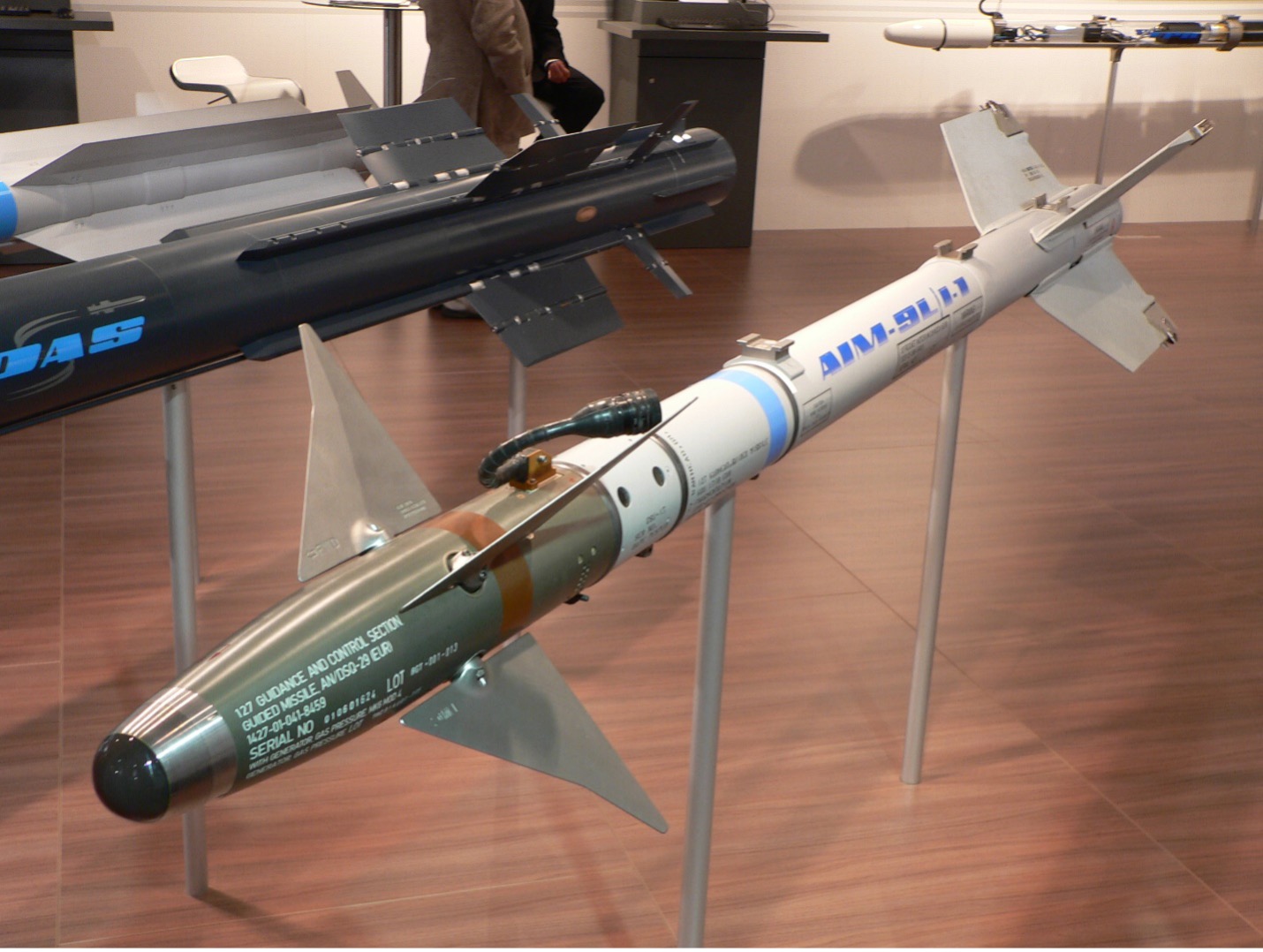
AIM-9L
David Monniaux, CC BY-SA 3.0 via Wikimedia Commons
The newest version of the Sidewinder, which was originally developed in the 1950s, the AIM-9X was first fielded in 2003 and updated to its Block III version in 2022. It is an all-aspect, passive Infrared (IR) missile designed for high off-boresight employment with a helmet-mounted cueing system. This means if the pilot can see a target, he/she can shoot it without maneuvering the aircraft.
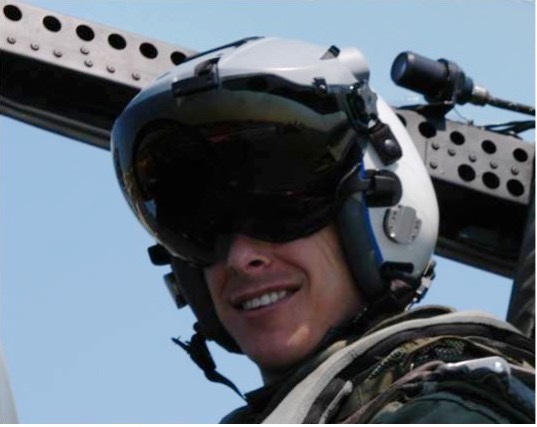
US Joint Helmet-mounted Cueing System (JHMCS)
Photo: .wikimedia.org
The AIM-9X has a published maximum range of 36 kilometers, which means it is also a capable BVR missile when employed with a fire control radar tracking the target. Reportedly, the Block III version has up to 60 percent more range.
The missile weighs 86 kg and uses a 20 kg annular blast-fragmentation warhead triggered by an IR/laser proximity or impact fuse.
Interestingly, it was last used in February 2023 by the US Air Force to shoot down four suspected Chinese spy balloons over the United States and Canada, one of which was at an altitude of over 18,000 meters.
The AIM-9 has been employed by countless aircraft over the years, with the AIM-9X variant fielded on the F-15, F-16, F/A-18, E/A-18G, F-22, F-35 and others.
The AIM-9 is currently in use by nearly 50 nations, according to Wikipedia.
M61 Vulcan 20mm Cannon
The Vulcan is a six-barreled Gatling-style rotating cannon typically carried internally. It fires a 20 mm x 102 mm round at a very high rate of 6000 rounds-per-minute – that’s 100 rounds per second. On fighter aircraft, the pilot must maneuver the aircraft to a point in front of the target, usually with advanced computer optical aiming through the heads-up display, so the enemy flies into your bullets even while defensively maneuvering.
It’s a point of pride to be good at employing this weapon from days of yore.
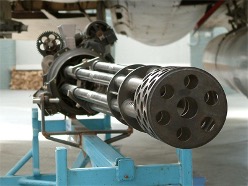
M61 Vulcan 20 mm Cannon
Taken by Thomas Fedor uploaded by Rhodekyll - http://en.wikipedia.org/wiki/Image:Vulcan1.jpg, Copyrighted free use
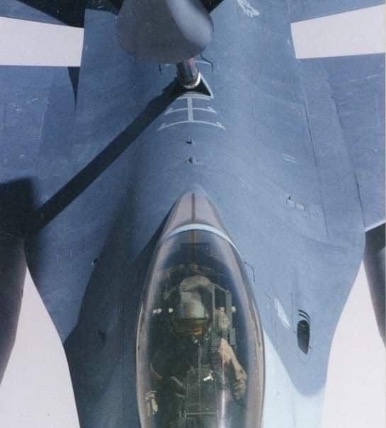
F-16 gun port on the right side of photo next to the cockpit
Photo by Christopher Stewart
You can also highlight the text and press Ctrl + Enter


